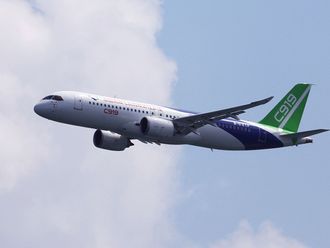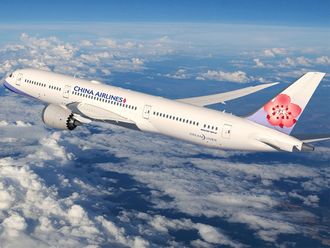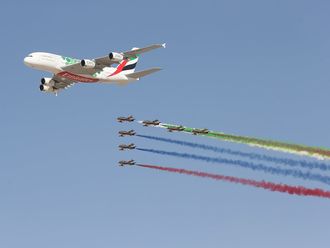GENEVA: For once, oil is not playing a wild card for the global aviation industry. Falling oil prices will be driving the profitability growth for world airlines next year, according to IATA (International Air Transport Association).
The Middle East airlines will reap $1.7 billion in net profits in 2016 as per IATA estimates, even as the financial forecast for the region’s airlines for this year has been revised downwards to $1.4b than the previously forecast $1.8b.
The aviation watchdog announced on Thursday in Geneva the financial outlook for the global airlines industry for the coming year as well revised its profit outlook for the current year.
Overall the region is still generating double-digit growth with capacity expected to expand by 12.1% and 12.2% respectively in 2015 and 2016, largely as a result of growth in traffic over the region’s modern hubs, according to Brian Pearce, Chief Economist at IATA.
Largely calling it good news for the aviation industry, IATA said the airline industry will reap $36.3b in total net profits in 2016 – averaging a net profit margin of 5.1%. The outlook for the industry for this year, meanwhile, was also revised upwards to a net profit of $33b (4.6% net profit margin) from $29.3b forecast in June.
Lower oil prices (forecast to be $55 a barrel for Brent in 2015 and averaging a lower $51 a barrel in 2016) are giving airline profits a boost, Pearce said, adding that this is “strongly moderated in many markets by the appreciation of the US dollar”.
“These are better numbers than we have reported before. Indeed the industry is surpassing an important benchmark. The cost of the capital is just under 7%. And our expectation for the airlines is to achieve a return on capital of 8.3% this year, increasing to 8.6% in 2016,” said Tony Tyler, Director General and chief executive of IATA. “So we are finally, after years of destroying capital, delivering the minimal level of profitability that an investor would expect.”
Other factors leading the profitability growth next year include a strong demand for passenger travel and stronger economic performance in some key economies, according to Pearce.
“Total passenger departures are expected to rise to 3.8 billion next year [up from 3.5b in 2015] travelling over some 54,000 routes,” he said.












